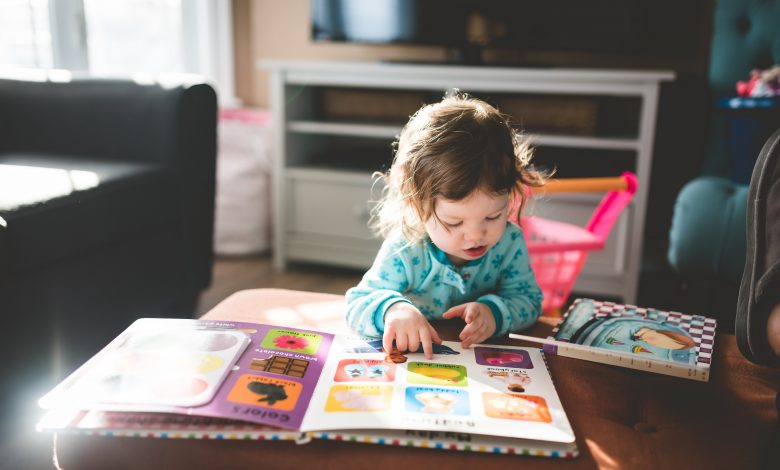How to Build Your Kids Vocabulary

When it comes to learning to read, kids’ vocabulary is key. When a young reader hears the word dog in a novel, he starts to sound it out. He reads the word dog with ease until he knows he is very familiar with it.
From All About Reading, How to Develop Your kid’s Vocabulary
What if, though, the child encounters the word yak in a story? If he’s never heard of a yak before, he might try to pronounce it, but then second-guess himself. Is this a true term or a made-up one? Have I correctly decoded it?
It’s also possible for older students to feel something similar. When a student hears the word bovine but does not know what it means, he can become irritated.
Reading comprehension requires a broad kids vocabulary. This article would clarify. How to integrate vocabulary development into your child’s educational plans,
as well as some common mistakes to prevent.
Four Types of kids Vocabulary
When we speak about words, we’re speaking to four distinct vocabularies. They are, in order, from largest to smallest:
Kids Vocabulary for hearing (words we can hear and understand)
Kids Vocabulary reading (words we can understand when we read)
Kids Vocabulary debate (words we use when we talk)
Making a language list (words we use when we write)
Speaking kids’ vocabulary is usually greater than reading vocabulary for younger students who are also learning to read. This is the standard order for older readers who have advanced from the “learning to read” stage to the “reading to learn” stage.
The four vocabularies have a large degree of overlap. Development in one field also contributes to expansion in another. Is it, however, possible for you to have an effect on this growth? The response is a resounding YES!
So, let’s look at ways you can help your kid expand his or her vocabulary.
Two Main Approaches to kids Vocabulary Development
From All About Reading, How to Develop Your kid’s Vocabulary
The bulk of a kid’s vocabulary is learned by indirect means:
Reading on your own
Aloud reading
Oral deliberations
Film films
The following are examples of direct language instruction:
Kids Vocabulary teaching in a formal environment
lexical review
Roots, suffixes, and prefixes are taught.
Maps of definitions
Although both indirect and direct methods of vocabulary learning are important, let’s take a look at what doesn’t work when it comes to expanding your kid’s vocabulary.
Five Common Mistakes in Teaching Vocabulary Words
Is this a routine you’re familiar with?
It’s Monday, which means it’s time to master a new collection of kids’ vocabulary terms. The kids use a dictionary to look up the vocabulary and copy the meanings. On Tuesday, they will complete a fill-in-the-blank worksheet or a fun vocabulary crossword puzzle,
and on Wednesday, they will complete a fill-in-the-blank worksheet or a fun vocabulary crossword puzzle. There will be a quiz on the twenty words on Friday. Then, whether or not they know last week’s terms, it’ll be time to start all over again on Monday.
Even the most obedient kids groaned inwardly at this demotivating routine,
ignoring the fact that all of us were taught vocabulary terms this way.
Is this a routine you’re familiar with?
It’s Monday, which means it’s time to master a new collection of vocabulary terms. The kids use a dictionary to look up the vocabulary and copy the meanings. On Tuesday, they will complete a fill-in-the-blank worksheet or a fun vocabulary crossword puzzle,
and on Wednesday, they will complete a fill-in-the-blank worksheet or a fun vocabulary crossword puzzle. There will be a quiz on the twenty words on Friday. Then, whether or not they know last week’s terms, it’ll be time to start all over again on Monday.
Even the most obedient kids groaned inwardly at this demotivating routine,
ignoring the fact that all of us were taught vocabulary terms this way.
The Conversational Approach to kids Vocabulary Training
The conversational approach is an efficient way to help your child expand his or her vocabulary. It’s an indirect approach that’s so easy to use that you can start using it as soon as you finish reading this post.
In a nutshell, the conversational approach involves actually communicating with your child and building on vocabulary terms that he or she has not yet heard.
Phase 1: Provide a clear, age-appropriate description for a new word that comes up in conversation or in a book.
Phase 2: Send your child one or two examples that he or she can appreciate.
Phase 3: Encourage your child to consider his own example or the antonym of the new word.
Step 4: For the next few days, use the new word in the conversation.
With these teaching skills and techniques. you can improve your kid’s vocabulary easily. vocabulary is the most important part of English learning.




